|
Venus Transit from Fillmore
By Carmelita Miranda — Monday, June 11th, 2012
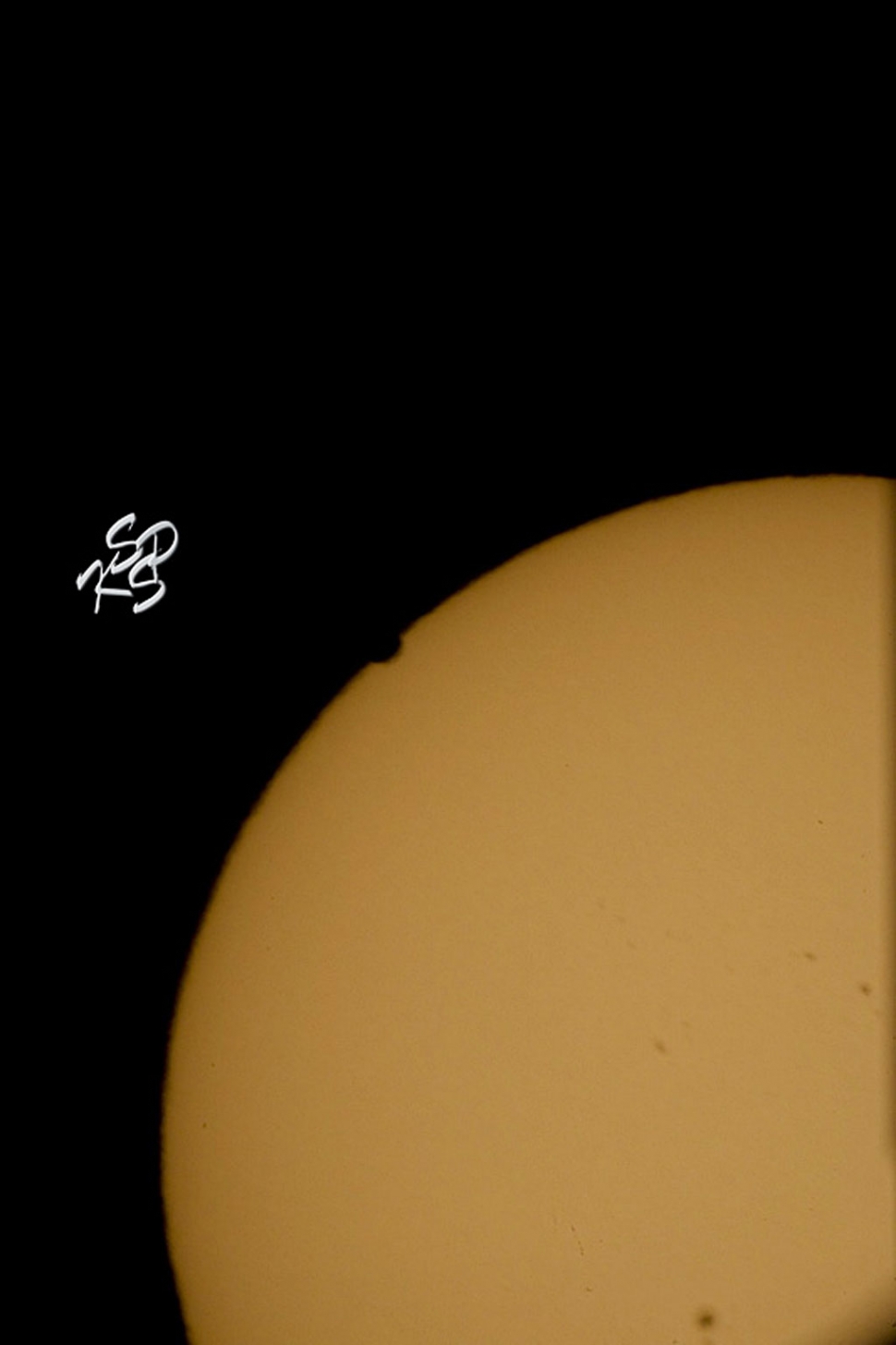 By Charles Morris and Carmelita Miranda. The black dot of the planet Venus moved across the Sun disk on Tuesday, June 5th. It took nearly 7 hours to make this trip. So why was there so much excitement among astronomers? Because this is a rare event. It happened in 2004, but wasn't visible from California. Previous to that, one had to be alive in 1882 to seen Venus transit the Sun. The next Venus transit will be in 2117 so this was a rare opportunity to see this event. Why doesn't Venus transit the Sun every time it orbits between us and the Sun? Because the orbit of Venus is slightly inclined to the orbit of the Earth so it typically moves either above or below the Sun. In 1882, the Venus transit was of great scientific importance in establishing the scale of the solar system. Expeditions from Europe were sent to Baja, Mexico and Tahiti, among others, to make measurements of this rare event. This year astronomers still used the Venus transit for research to study the atmosphere of Venus, for instance. Amateur astronomers and the public simply enjoyed the viewing this rare event. We were fortunate to have seen the Venus transit from Nice, France in 2004, where able to see the entire event. This year from California, the transit began at 3:06pm and was still in transit at Sunset just after 8pm. We followed the transit until just after 7pm when the Sun set behind the mountains. We were happy to show the transit to a number of people that stopped by to see the show. 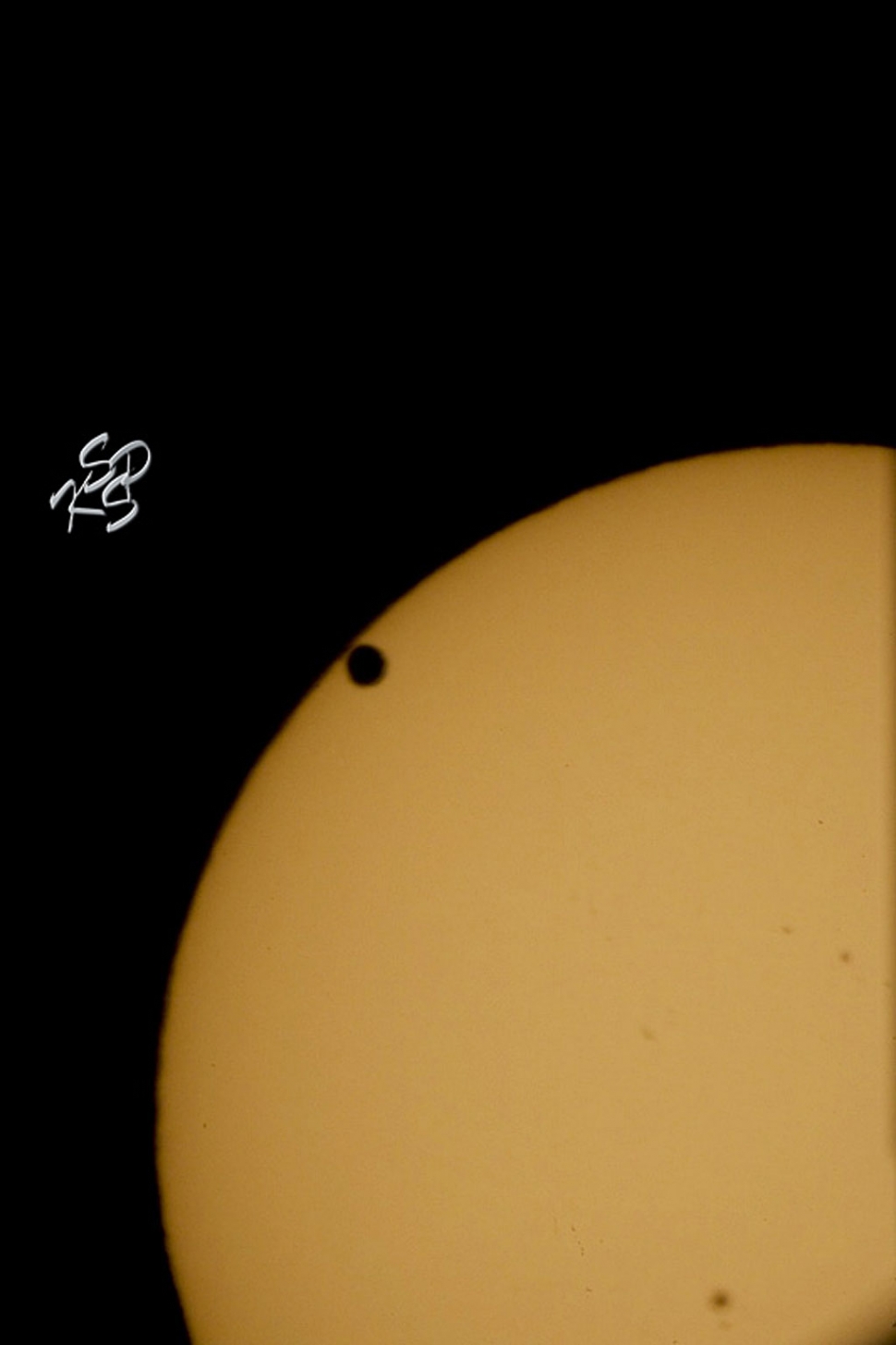 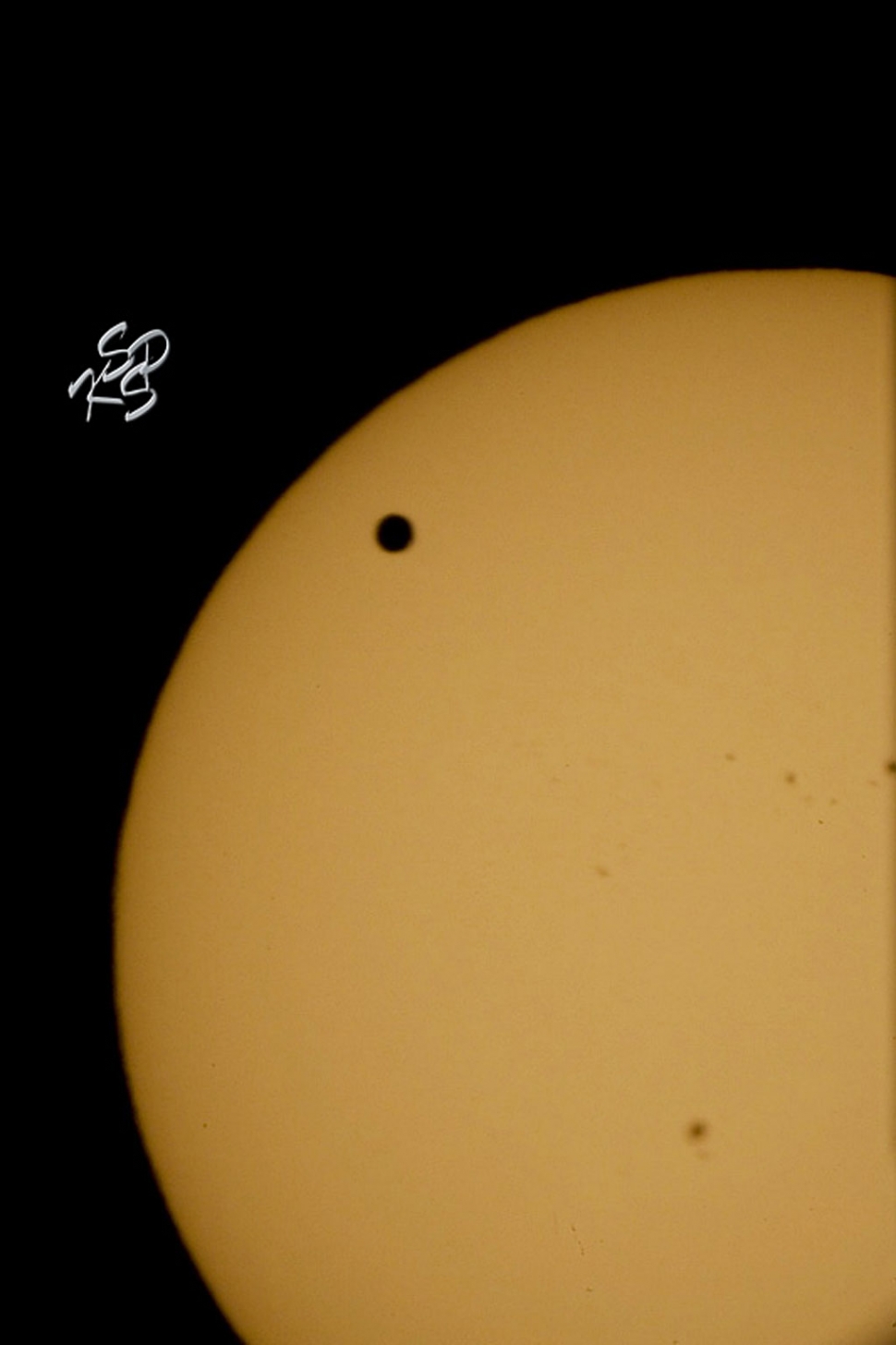 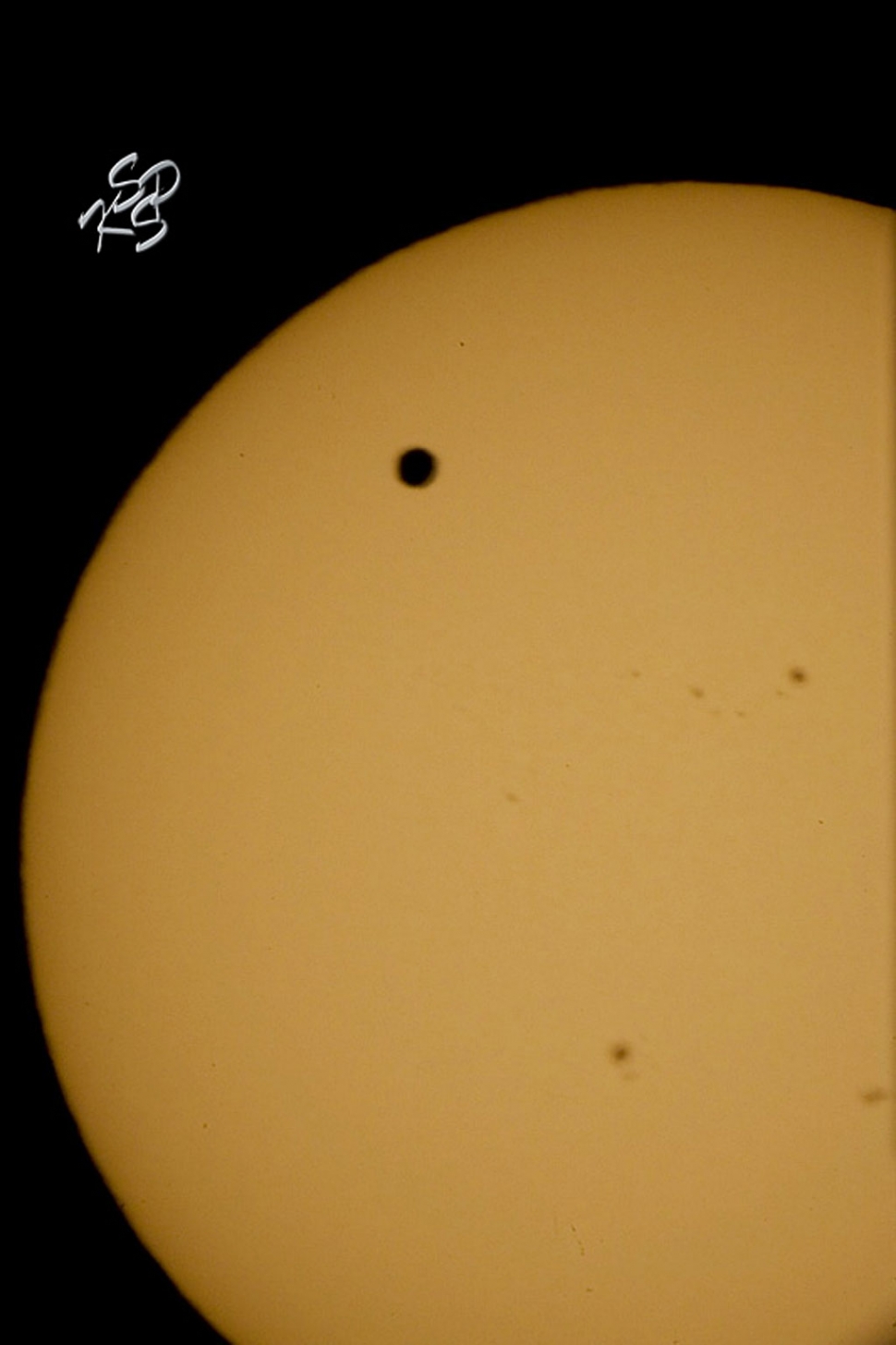 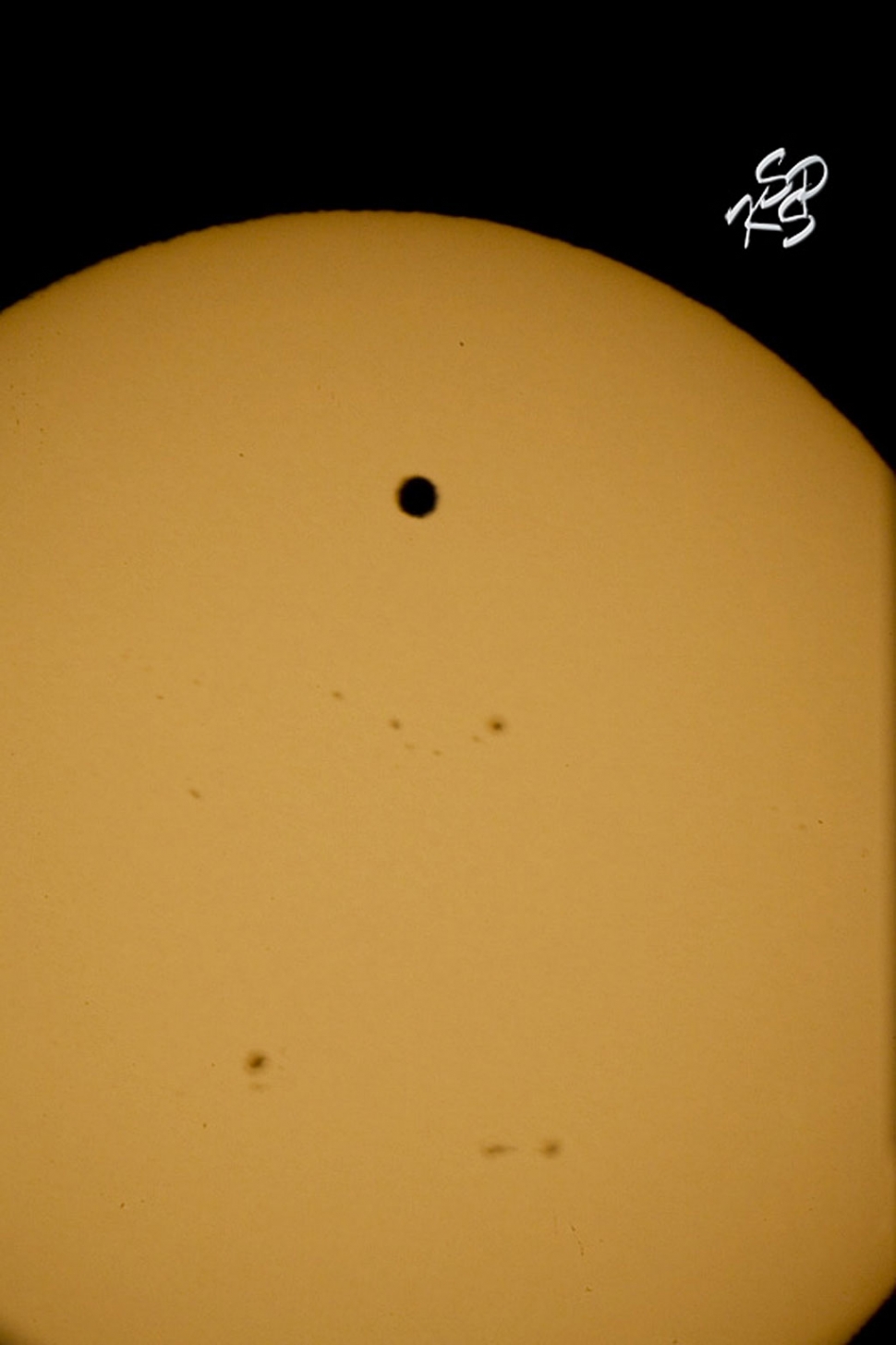 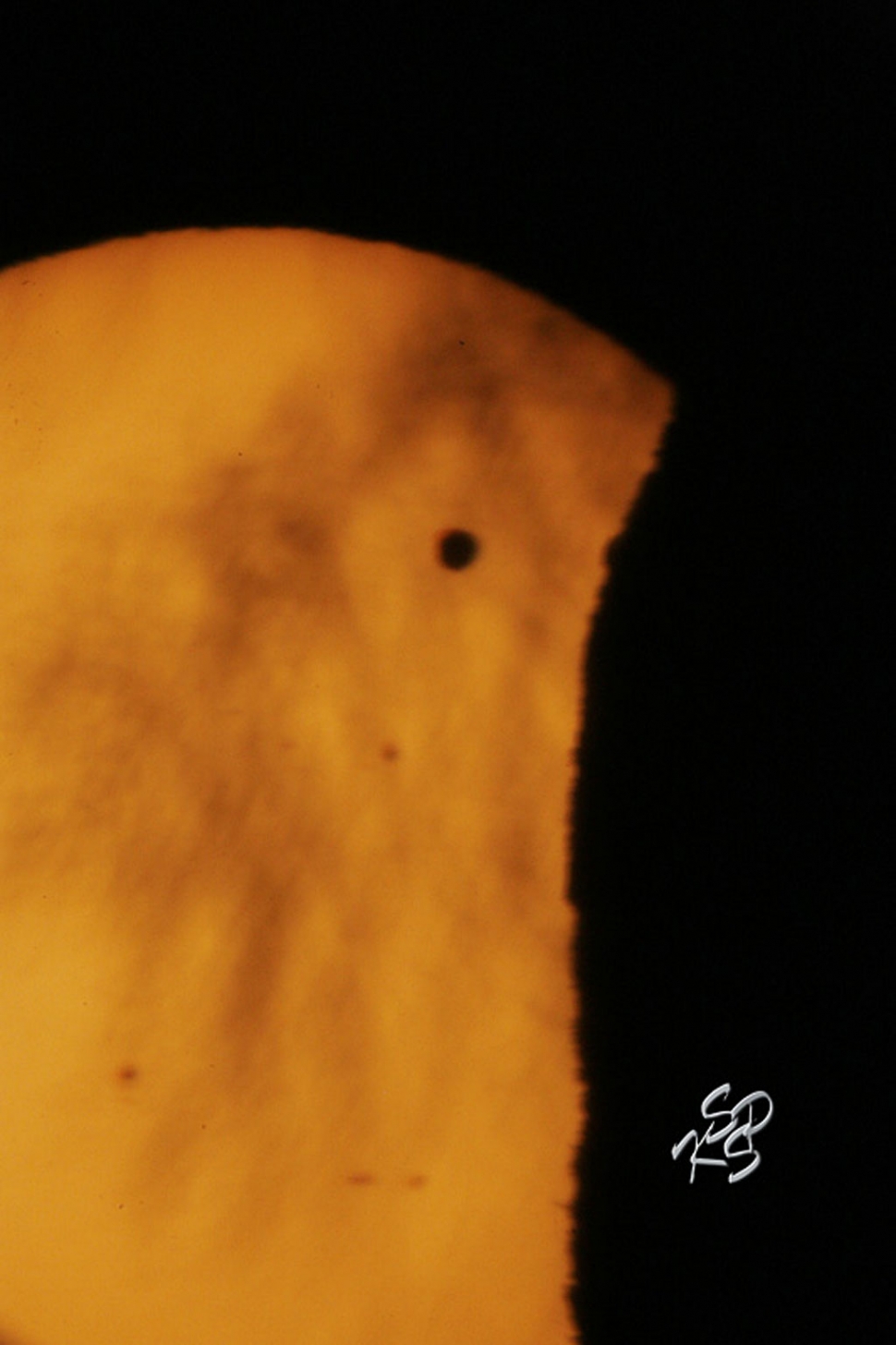 |
